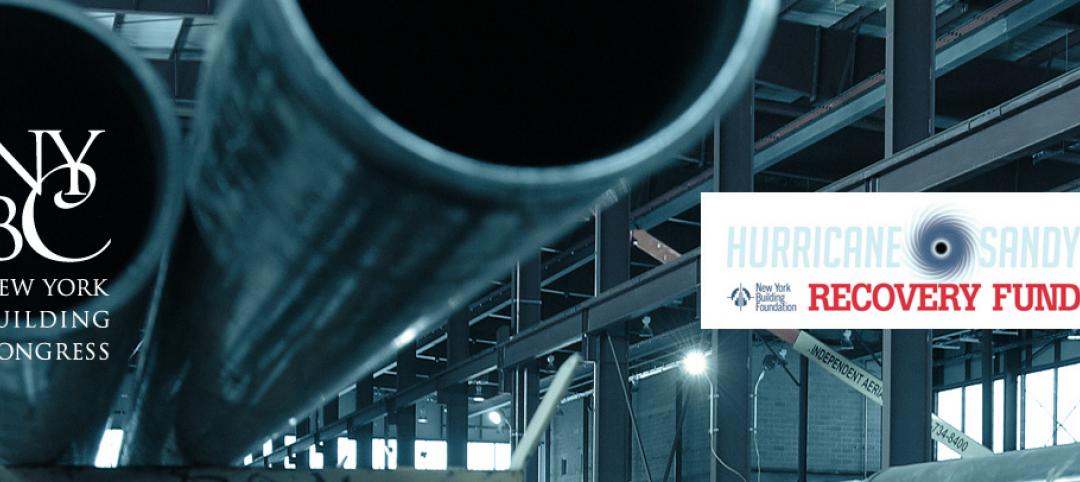AEC firms and their developer clients should be watching the progress of two bills wending their way through Congress that, if passed, could become important first steps toward opening the writing of flood insurance policies to private-sector carriers.
The U.S. House of Representatives recently passed HR 2901, the Flood Insurance Market Parity and Modernization Act of 2015, on a vote of 419-0. The U.S. Senate is currently reviewing similar legislation, SB 1679, on which it is expected to vote this summer.
The bills expand upon the controversial Biggert-Waters Flood Insurance Reform Act of 2012, which clarified the intent of Congress to get the private insurance sector to develop flood-insurance products that could compete with taxpayer-subsidized policies offered through the National Flood Insurance Program (NFIP).
That program is more than $23 billion in debt and has more than $1.1 trillion in total property exposure. NFIP’s main problem has been that it hasn’t been charging policyholders enough for flood coverage, explains Anthony Kammas, a partner with New York-based Skyline Risk Management, surety and insurance brokerage, who is also Secretary-Elect of the Professional Insurance Association (PIA).
Biggert-Waters called for the phasing out of subsidies and discounts on flood insurance premiums, and pushing more risk onto private-sector insurers and policyholders. Under Biggert-Waters, 5% of policyholders—including owners of non-primary private residences, business properties, and “severe repetitive loss properties” that are subject to redrawn floodplain maps—would have incurred 25% per year rate increases “until the true risk premium is reached.” Another 10% of policies would retain their NFIP subsidy until the owners sell their houses or let their policies lapse.
Policyholders screamed about those premium hikes, especially since the new maps put a lot more real estate within floodplains.
“It became clear that flood insurance needed to be repriced,” says Kammas. By the government agreeing ultimately to more gradual premium increases that would be priced using actuarial models, “private carriers started to think that they could make money on a primary basis.” Kammas adds that reinsurers are looking for places where they can put investors’ dollars to work.
Last month, PIA and a contingent of members spent two days on Capitol Hill meeting with lawmakers, including New York Sen. Chuck Schumer and New Jersey Sen. Robert Menendez, to urge them to support the bills that would open up the flood market to private carriers.
Kammas says the association’s goal is not to eliminate NFIP—“it will never disappear,” he says—but to make it the carrier of last resort. Kammas acknowledges that NFIP would be needed to provide flood insurance in flood-prone areas for which private carriers are less likely to offer policies. PIA also wants Congress to reauthorize the government flood program for 10 years, instead of annually, which the association believes would lend more stability to the marketplace.
Under NFIP’s “write your own” program, private carriers are allowed to service coverage that’s written by NFIP (Skyline does this). If the Senate passes SB 1679, the next step, says Kammas, would be to get private insurers engaged in offering their own flood-insurance products. (He could not provide names, but Kammas says a number of private insurers have policies that are ready to go.) The terms and conditions of such policies still need to be worked out, however, including their pricing.
“There’s a lot of work to be done, because there’s no historical information in place,” says Kammas.
He says AEC firms and developers need to be paying attention to how floodplains have been rezoned, and to make sure their policies are in compliance with their lenders’ requirements. They should also make sure that, in the event they choose to switch coverage to a private carrier, their current policies provide a continuity of coverage. And lastly, given how there’s no competitive pricing currently, policyholders would need to price-shop carefully to make sure they are getting the coverage that matches their needs at the lowest price.
Related Stories
| Feb 8, 2013
WDMA releases national policy agenda for windows, doors, skylights
Document urges a regulatory stance that will support manufacturing, including favorable building codes and tax policy.
| Feb 6, 2013
Green-roofing bills approved by New Jersey's state Assembly
Two bills that would require installation of green and blue roofs on new government buildings received overwhelming approval from the state Assembly in New Jersey.
| Jan 16, 2013
Pentagon plans huge spending cuts, including construction funds, amid budget deadlock fears
Defense Secretary Leon Panetta has ordered cuts to military spending as a precaution in case the White House and Congress fail to agree to avert $52 billion in cuts to the Pentagon budget this year.
| Jan 8, 2013
Congress passes Drywall Safety Act
Congress recently passed the Drywall Safety Act; President Barack Obama is expected to sign it soon.
| Jan 4, 2013
AGC economist says "fiscal cliff" deal will give construction a boost
The deal in Congress to avoid going over the so-called fiscal cliff "should encourage many businesses to go ahead with projects they have held in reserve," said Ken Simonson, chief economist of the Associated General Contractors of America.
| Dec 27, 2012
New York City law tracking building energy use yields surprises
A legally mandated report that tracks the energy use of New York City's largest buildings provides details about which buildings are achieving higher-than-expected energy efficiency, such as the Chrysler and Empire State buildings, as well as those that are performing poorly.
| Dec 27, 2012
New Jersey considers green roof mandate for state buildings
The New Jersey legislature is considering a bill that would require installation of green or blue roofs on state buildings that are at least 15,000 sf.
| Dec 13, 2012
So-called fiscal cliff is already affecting construction jobs, AGC finds
In November, the construction industry shed 20,000 jobs and its unemployment rate reached 12.2%, according to an analysis by the Associated General Contractors of America.
| Dec 13, 2012
New York City poised to enact recycling mandate for multi-family dwellings
New York City lags behind other large cities in recycling with only 15% of residential trash being recycled. A new bill passed by the City Council aims to improve the rate by changing how new apartment buildings are constructed.
| Nov 29, 2012
New York contractors say they will pay tax despite a court ruling that the tax is unconstitutional
The New York Building Congress says it will voluntarily pay a tax declared unconstitutional by the courts because, it says, the money is vital to maintaining the city’s transportation infrastructure.















